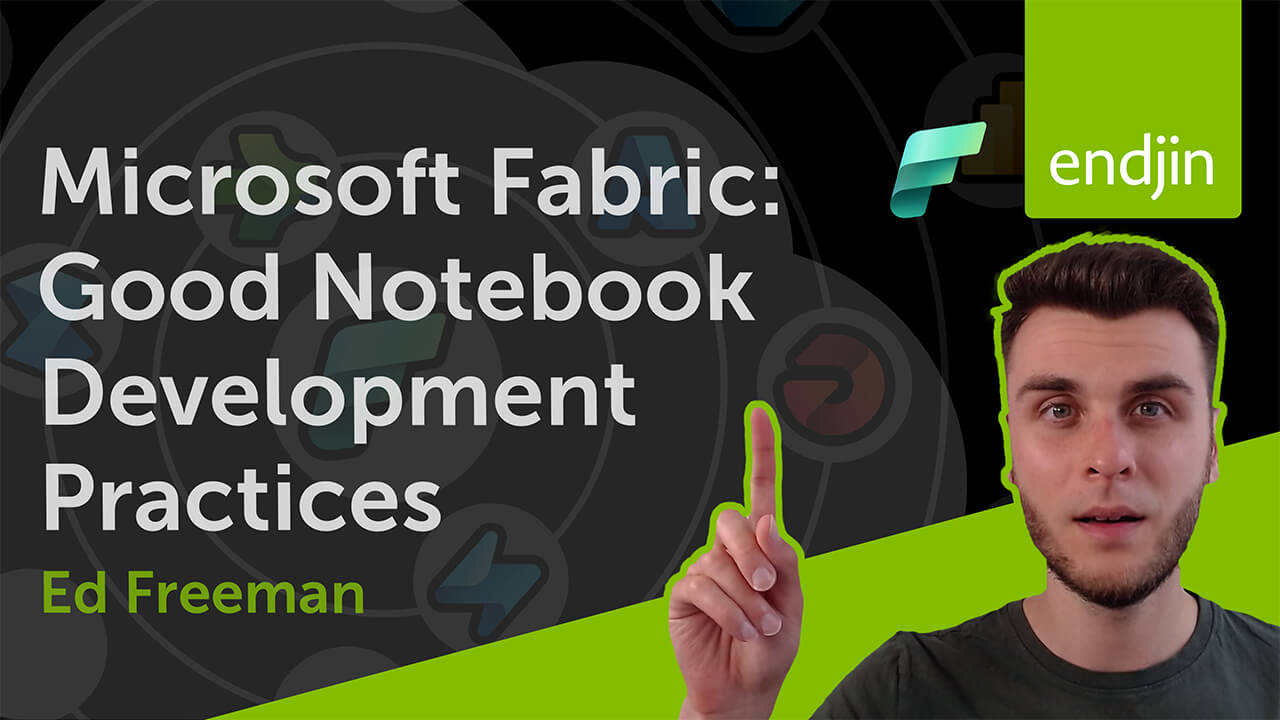Microsoft Fabric - Good Notebook Development Practices

This episode sheds light on best practices for developing Fabric Notebooks, the primary artifact type in your code-base. Notebooks can quickly turn into large, unstructured dumps of code, making it difficult to track lineage throughout your transformations. By following a few simple steps, you can turn notebooks into a well-structured repository that's easy to follow.
The video highlights several useful practices you can adopt, such as adding commentary within your notebooks, structuring your logic into separate classes and functions to achieve modularization, and being explicit about the data you're reading and writing by defining schemas as code. The talk is divided into several chapters that cover the underlying principles of good development practices and methods to achieve them. For example, Workspace artifact folder structure and Notebook structure demo - commentary.
The video also contains useful links to learn more about creating folders in workspaces and developing, executing and managing Fabric notebooks. This episode is part of the Microsoft Fabric End to End Demo series that offers a comprehensive overview of how to use Microsoft Fabric effectively. Other related resources are also provided to help you master the art of using Fabric Notebooks.
Find the full video and all related content on Endjin's website.
Published on:
Learn moreRelated posts
Microsoft Fabric Machine Learning Tutorial - Part 2 - Data Validation with Great Expectations
This tutorial delves into the intricacies of data validation in the realm of Microsoft Fabric and Great Expectations. It demonstrates how a da...
Organize Fabric Lakehouse with Medallion Architecture | Learn Together Series
This video is part of a series on organizing a Fabric lakehouse using medallion architecture design. You can find more information on the seri...
Organize Fabric Lakehouse with Medallion Architecture Design | Learn Together
If you're interested in organizing a Fabric lakehouse and want to learn about medallion architecture design, this informative video is for you...
Storage Utilization in Fabric OneLake | Monitor Your Lakehouse Storage
In this blog post, you will learn how to check the amount of storage being used by your Fabric OneLake in Microsoft Fabric. The author address...
Microsoft Fabric - Role of the Silver Layer in the Medallion Architecture
The Silver layer is where we apply standardization to our source datasets. This standardization aligns field names across sources, applies com...
Microsoft Fabric - Processing Bronze to Silver using Fabric Notebooks
Notebooks in Fabric are a lot like notebook experiences in other tools you're probably already familiar with. They allow us to write code in a...
Augmenting Gold Layer with Semantic Link and SparkSQL in Microsoft Fabric
If you've ever wished to query data from a Power BI semantic model using SQL, the Semantic Link feature makes that dream a reality! In this po...
Data Modeling for Mere Mortals – Part 4: Medallion Architecture Essentials
If you're a mere mortal trying to grasp the nuances of data modeling, you've come to the right place. In this fourth and final part of the ser...
Microsoft Fabric - Lakehouse and Medallion Architecture
In this informative video, Ed Freeman delves into the concept of Lakehouse and Medallion Architecture, and how they interconnect with Microsof...
40 Days of Fabric: Day 3 – Lakehouse
As part of the 40 Days of Fabric series, Microsoft Fabric introduces the concept of Lakehouse, a blend of Data Warehouses and Data Lakes. The ...